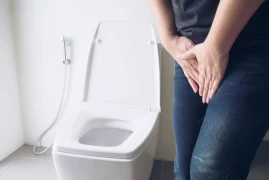
WHAT IS STONE DISEASE?
- WHAT IS STONE DISEASE?
- WHAT IS STONE DISEASE?
- STONE DROP
WHAT IS STONE DISEASE?
A stone is a hard mass formed by crystals excreted in the urine in the urinary tract. It can be found in the kidney, the ureter, in the duct that carries urine from the kidney to the bladder, in the bladder (urinary bladder). There is a genetic transition in stone formation, as well as metabolic and anatomical disorders. But the most common cause is not getting enough fluids. These stones usually fall out without any discomfort, but this disease can also become one of the most painful ailments known.
It can even cause kidney loss in people with a high pain threshold, so being controlled without waiting for getting sick is important in solving the problems before they grow, as in many problems.
Stone disease is common, one out of ten people in the community develops stones at any stage. You have a 5-10% risk of stone formation throughout your life. Men form stones 3 times more often than women. This difference is now narrowing due to changes in lifestyle and diet. Stone formation is most likely between the ages of 30 and 50. Stone patients form stones more than once in their lifetime.
Not all stones require treatment. If your stone is causing discomfort and does not fall out of your urine naturally, you need treatment.
STONE DROP
If your stone is likely to be excreted in the urine, your doctor may prescribe medications to facilitate this process. The smaller and closer the stone is to the bladder, the more likely it is to fall, the larger and closer to the kidney the less likely it is to pass. The World Health Organization recommends that 'if the stone causes obstruction in the urinary canal and swells the kidney, it should be intervened to relieve the obstruction and prevent the kidney from deteriorating'. These interventions are open surgery (with a 10 cm incision), ESWL (Shock Waves Stone Breaking), PCNL (Fracture of Stone by Entering the Kidney from the Outside with Tube-1.5 cm incision), URS (stone breakage in the ureteral canal - no incision). ), RIRS (laser breaking of the stone within the kidney - no incision).
With the developing technologies in recent years, endoscopic surgical interventions without disturbing the patient's body integrity have also brought innovations in the treatment of stone disease. RIRS (Intrarenal laser stone breaking operation with endoscopic method) is the process of seeing the stone through a camera and pulverizing the stone by laser, by going through the urinary opening of the patient to the bladder and from there to the kidney through the ureter. With this method, it has become possible to treat stones without making an incision in the body. After this operation, the patient can be discharged from the hospital on the same day and can return to his daily life.
Since the stones are pulverized after the operations and there is no incision, there is no feared pain.
Stone particles obtained after stone treatments should be sent to stone analysis and the type of stone in you should be learned. This knowledge to be learned is very important as it helps in choosing the best preventive and therapeutic method, it should not be neglected.





